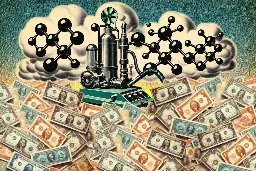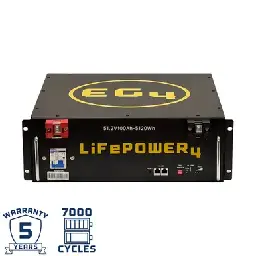
NYT is spouting every headline they can imagine to shift votes toward Trump, and not just lately. Their entire editorial focus is to cast confusion on Democrats' prospects. They should be recognized as firmly partisan and no longer serving a journalistic purpose. Unfortunate, but that's the times in which we live.
I'd say no in general, but I hold the reins very loosely . . .
you want proof that accumulated carbon dioxide is causing environmental destruction?! https://www.ipcc.ch/report/ar6/syr/downloads/report/IPCC_AR6_SYR_SPM.pdf
Tthis is perhaps good news, but it does not amount to a change of course, unfortunately. If we have passed peak emissions, it is still a long way from net-zero emissions. Like if you pass your peak rate of overspending your salary, but you are still continuing to go farther into debt. Even when you get to parity between salary and expenditures, you will STILL have the accumulated debt and in the case of CO2, that debt is wreaking ecosystem destruction. Do not cheer this news.
There is a new process for treating wastewater sludge that destroys the microfibers, so that is good news at least. I think it may be expensive, of course. It is called "hydrothermal carbonization". Basically put the sludge in a giant pressure-cooker and the heat breaks the plastics into carbon and some water-soluble residual molecules which can go back to the start of the wastewater treatment plant to be biodegraded. But like others say, the main source in general is tires - not sure if they know whether tire microplastics are the main source in agricultural land though.
In economic terms, nature is often referred to as an "externality" - meaning, as you say, things which do not appear on corporate balance sheets - that are unvalued. We have collectively recognized that clean water in rivers is something valuable to society, and converted the externality of "use the river to carry away the pollution!" and "use the river water to cool the process plant" into actual costs: not by making investors put their money into riverine systems for future profit, but by requiring permits which restrict what can go into or come out of the river. We can, and sometimes do, manage the land in similar ways. I advocate for it, but of course I get a little anxious about the details if it comes to MY land!
I spent a couple of years in Guna Yala, the indigenous-peoples' territory of northeastern Panama. The Guna people live in towns on islands just offshore of the coast, and they farm and hunt in the mainland forest. When a Guna family wants to grow crops, they go with a village chief to the forest area near the village and identify a piece of land that is suitable. The chief approves it and records the location, and the family has it for three years. They can cut trees, plow soil, plant whatever. After three years, they have to abandon it and nobody can use that land for three years.
I feel very much that my land is not REALLY mine. I have stewardship. The people that had it in the recent past (20th century), did not treat it well and shame on them. But they are dead and gone, so they don't care I guess. I am treating it better and someone later will probably be glad to acquire it because of the great soil, healthy and perhaps valuable tropical hardwoods, and well-connected ecosystem. I'll be dead and gone so I won't care. It is IMMEDIATELY gratifying to live in this place and see it heal and prosper and that is all the return on investment I could ask. But I would at least say they should give me a break on property tax for land I restore to forest (even food forest). Maybe I will donate it to the Nature Conservancy some day, to lock in the gains.
From the immortal Journal of Irreproducible Results, "The Data Enrichment Method": ". . .its principal shortcoming is that before the enrichment process can be started, some data must be collected. It is quite true that a great deal is done with very little information, but this should not blind one to the fact that the method still embodies the 'raw-data flaw'. The ultimate objective, complete freedom from the inconvenience and embarrassment of experimental results, still lies unattained before us."
fwiw, this story is also covered here, imho a more credible source: https://www.aljazeera.com/news/2024/2/1/palestinians-demand-international-inquiry-after-mass-grave-found-in-gaza
I note that only one of the photos accompanying the article features PLASTIC rubbish. curious
The article mentions hydrogen from electrolysis of water, but I think a bigger source in the future could be steam reforming of biomass. That is, when you heat biomass (plant matter, sewage sludge, maybe even municipal garbage) to about 300C in steam, the organic matter breaks down into simple molecules like hydrogen, carbon monoxide (highly flammable!), methanol, elemental carbon (biochar) and miscellaneous others. Some of those molecules can be recovered for important chemical feedstock (since we won't have petroleum or natural gas as feedstocks anymore, right?), and the gas can be fuel.
In the early days of natural gas use, towns would "reform" the methane (CH4) by reacting it with steam to make carbon monoxide (CO) and 3 molecules of H2 - a mixture known as "city gas". It is not new technology.
📢📢📢 OpenAir joins 350+ companies and organizations from across the CDR sector to call for a method-neutral EU #CRCF 🇪🇺🇪🇺🇪🇺 docs.google.com/document/d/1...
We are going to need a lot more of this kind of work. I read on permaculture sites about the need to pre-load biochar with nutrients - planting seeded biochar without nutrients could be unproductive. Biochar loading also depends on soil type, how the biochar is made, and how it is applied (tilled in or top-dressed). Size probably matters - big chunks will eventually break apart, but moderate size reduction gives better distribution. Fine dust will not provide the same degree of soil aeration. So, the devil is in the details.
gotta admit, that is a lot safer approach than trying some shit on the real thing
The statistic of low Firefox use is based on accessing US government websites. Could it be that there is significantly LESS government site access by the population of users that prefer Firefox? As a corollary I recently read that game companies observed significantly HIGHER bug reporting from Linux users on Steam, not because there were more Linux-related bugs, but simply because that set of users were more likely to initiate bug reports. Of course Firefox is not Linux and Steam is not the world, but a statistic from a relatively narrow segment of the internet should not be assumed representative of the whole.
I have been investigating the fine art of dishing out a wooden chair seat for comfort today, and made discoveries that can be readily condensed into a, imho miraculously easy formula. So here goes:
Your "sitz" bones or ischial tuberosities are prominences of the pelvis that are the hard spots when you sit. They are pretty consistently located in adult humans as it turns out, though you'll have a hard time finding dimensional data if you go looking! I measured approximate spacing among a slightly inebriated and jovial crowd who endured the indignity with humor and made a rough prototype seat to check my theory. Drill two 2-inch diameter holes spaced five inches apart at center (3-inches of material remaining between the holes). For a finished seat, one would shape the edges, but don't even bother for this experiment - just drill the holes in a piece of lumber and sit down on it. shift around for comfort and when your ischial tuberosities align with the holes you will say aaah!
I will be making two holes in a rectangular stool seat at this spacing, centered about three inches from the "back" edge of the stool, and sanding smooth and dishing out the seat a little. I'll try to remember to post a finished picture, but I found this preliminary result too great and dramatic to wait.
Some individuals might be grateful for a third hole at the centerline and about two inches closer to the back edge - where a tailbone-afflicted person does not need hard support and an average person will not miss it. I have not tested this third hole yet, maybe others will report...
Biochar is such an expanding area of investigation, it would be difficult to write a comprehensive book at this point. Of course the root idea of partial-combustion to make soil amendment is well-enough known, but there is much being learned about how to alter the properties of the char by how the pyrolysis is performed. There is much to be learned about how much char to add and how to pretreat the char. Beside burning to make char, there are other ways it can be heated and those affect the type of pyrolysis products that form - molten salt, steam, and subcritical hot water are all gaining prominence. The management and use of the pyrolysis products aside from the char is also a complex topic.
The EU is promising storage will eventually be available — but manufacturers in Europe’s poorer regions are worried it won’t be within reach.

quite a lot of captured CO2 can go into concrete. Maybe a cement (powder) producer is not able to tap into that method directly, but policy shifts will open it up. There are already several US states with low-embodied-carbon concrete laws creating markets for this purpose.
sorry nobody has replied - I'm no help for you from here in Puerto Rico. Are you familiar with the site iNaturalist.org? When we're looking for a species that seems to be missing, we use iNaturalist to check for sightings in the region. You can filter by dates.
I also recently read about "hydrocarbonization" which is another approach for pyrolyzing sewage sludge. Pyrolysis of biomass on a dry basis is often energy-intensive in part because of moisture in the biomass. Nowhere is this more relevant than with sewage sludge, which leaves a wastewater plant at only about 25% solids, typically (though it has a solid appearance like damp clay). If the pyrolysis is performed IN water (which means under pressure if one wants to avoid evaporating the contained water), it can not only still occur, but the water at high temperature and pressure is an active medium for converting some of the biomass into smaller organic molecules.
Upshot is that there is quite a lot of work going on nowadays to be creative with biomass management - that seemed to be of low interest even a decade ago.
Scientists from the UK’s National Oceanography Centre (NOC), in collaboration with Seafields, Integrated Environmental Solutions (INES) and the
wrong, western philosophy is often based on dichotomies - something is either this or that, but it is more of an analytical tool (I am not nature despite that I am a part of nature). Eastern philosophies are often mystic, though there is western mysticism - that some aspects of existence are incomprehensible on a rational basis and therefore dichotomies are illusory. But such a perspective does not inherently make people better stewards of the environment - in fact they might conclude that their every action is "natural" by definition.
lmao
In the US, stove burners are rated in the confusing units of "BTUs" which is actually a unit of energy, not power. When they say BTU, they mean BTU/hour. The highest-rated burners on a typical stove are about 10,000 Btu (per hour), but high-end stoves can get up to about 18000 - that is equivalent to about 5000 watts. My single-element induction top is only rated for about 1000 watts. So although it heats and cools rapidly, I suspect it is not up to the demands of wok cooking (unless one wants to cook only very small portions).
OpenAir is excited to present This Is CDR, an online event series that explores the wide range of carbon dioxide removal (CDR) solutions currently being researched, developed, and...



entry details in the image text. A QR code is provided for a registration link
cross-posted from: https://slrpnk.net/post/3903718
> Excerpt: > > > That’s the theory, anyway. But today, the lion’s share of the CO2 captured from industrial processes doesn’t go back into the ground. Instead, 60 percent of it is used to extract more oil, in a controversial process known as “enhanced oil recovery.” > > > > “I think it’s a huge problem,” said Lorne Stockman, research co-director of the advocacy group Oil Change International. “The oil and gas industry has done a very good job of co-opting our climate and clean energy policy.” > > > > For over a decade, the U.S. government has been quietly funding the capture of CO2 that is ultimately used to drill more oil. Some experts and researchers argue that the climate impact is net positive: The oil will be drilled anyway, and the process can help companies learn how to capture CO2 more efficiently. But others say that the government shouldn’t be helping companies sustain more fossil fuel extraction.
According to a new paper in Oxford Open Climate Change, the strategies humanity must pursue to reduce climate change will have to include more than reducing greenhouse gases. This comes from an analysis of climate data led by researcher James Hansen.

Despite major investments from Big Tech and “startling” maturation of CDR technology, mid-century removal targets are far off.

My rainwater collection begins with a first-flush and debris removal tank, but it is not ideal; all the water flows through it and in a big rain it can stay stirred up. So it has debris and because it is necessarily open to the roof this means some bugs in there. The outlet to the storage tank is wrapped with three layers of window-screen cloth, but the overflow is open to the drain. Frogs (cute little coqui tree-frogs) come up the drain and inhabit the tank. The storage tank overflow ties into the first flush overflow, so once in a while there is a tree frog in the first storage tank. There are no bugs in that tank so the frog will die if I fail to capture it (which they are very wily).
How can I keep a frog from climbing up the pipe while being sure I do not obstruct water going down the pipe?


Table top is four 50-pound bags of ready-mix grout concrete (no stone, just sand), 3m of 1m wide 1x2inch fence mesh.
Chairs were solid white upholstery. We bought them in a second-hand store and painted with diluted acrylic (to hide old stains). Waiting 30 days before I apply sealer to the concrete.
has anyone here ever experimented with an "electromagnetic" pump? If the pumped liquid is conductive and the piping is enclosed in a coil (think solenoid), and a current is passed across the fluid near the coil, then the magnetic field made by the coil should attract the fluid passing the transverse current (causing it to flow). As fluid flows toward the coil, new fluid starts passing current and so on.
Electromagnetic pumps are used in metal processing for continuous casting, but those are fancy and expensive devices. Could I pump seawater by wrapping a coil around a garden hose and pop-riveting a couple of electrical contacts into the hose on opposite sides next to the coil? I think regular "fresh" water would not be sufficiently conductive, but whatdoIknow? My longer term plan is to try pumping molten salt, but I want to learn on cooler stuff first.
I'm all ears!
This is a bit tangential, but it is a well-framed commentary which applies when we think about CDR.
cross-posted from: https://aus.social/users/ajsadauskas/statuses/111062337668091472
> Right now, could you prepare a slice of toast with zero embodied carbon emissions? > > Since at least the 2000s, big polluters have tried to frame carbon emissions as an issue to be solved through the purchasing choices of individual consumers. > > Solving climate change, we've been told, is not a matter of public policy or infrastructure. Instead, it's about convincing individual consumers to reduce their "carbon footprint" (a term coined by BP: https://amp.theguardian.com/commentisfree/2021/aug/23/big-oil-coined-carbon-footprints-to-blame-us-for-their-greed-keep-them-on-the-hook). > > Yet, right now, millions of people couldn't prepare a slice of toast without causing carbon emissions, even if they wanted to. > > In many low-density single-use-zoned suburbs, the only realistic option for getting to the store to get a loaf of bread is to drive. The power coming out of the mains includes energy from coal or gas. > > But. > > Even if they invested in solar panels, and an inverter, and a battery system, and only used an electric toaster, and baked the loaf themselves in an electric oven, and walked/cycled/drove an EV to the store to get flour and yeast, there are still embodied carbon emissions in that loaf of bread. > > Just think about the diesel powered trucks used to transport the grains and packaging to the flour factory, the energy used to power the milling equipment, and the diesel fuel used to transport that flour to the store. > > Basically, unless you go completely off grid and grow your own organic wheat, your zero emissions toast just ain't happening. > > And that's for the most basic of food products! > > Unless we get the infrastructure in place to move to a 100% renewables and storage grid, and use it to power fully electric freight rail and zero emissions passenger transport, pretty much all of our decarbonisation efforts are non-starters. > > This is fundamentally an infrastructure and public policy problem, not a problem of individual consumer choice. > > \#ClimateChange #urbanism #infrastructure #energy #grid #politics #power @green
There is a big difference between the CDR needed to reach net zero, for neutralizing methane, and removals to bring back down temperatures after overshoot.

tldr several BILLION tons per year by 2050! Roughly equivalent to the total mass of all the cars in the world - every year.


At Laguna Cartagena, near Cabo Rojo, Puerto Rico (red bird with black chest and mask, perched on green leaves, lit by sunrise)
cross-posted from: https://mander.xyz/post/2421501
> There seems to be a huge number of miscellaneous projects for a specific type of environmental restoration or some other activity that is specifically aimed at carbon sequestration. For example, seagrass restoration alone has a plethora(1,2,3). Is there a decent list of these projects? I found this cool list of CCS projects(4), but that’s different. > > If such a list exists, I have another question: Is there an objective way to compare their effectiveness? > > https://www.projectseagrass.org > > https://www.medseafoundation.org/index.php/en/portfolio-ita-2/a-sea-forest-to-save-the-planet/34 > > https://www.seegraswiesen.de/en/ > > https://en.m.wikipedia.org/wiki/List_of_carbon_capture_and_storage_projects
This is a video of my off-grid house in the Dominican Republic, which is featured in this community's title background. It is for sale, so buy it and you can be famous! lolz https://drive.google.com/file/d/16s22L6fgJRtxPQ-a6_aEWy8QJsgsWexN/view?usp=sharing
Prominent academics, including a former IPCC chair, round on governments worldwide for using the concept of net zero emissions to ‘greenwash’ their lack of commitment to solving global warming.

Net Zero is when the bathtub quits overflowing, CDR is how we mop up the water and pump out the flooded basement.
Overconnected? Want to grow your own crops? Unplug from it all in one of the Best States to Live Off the Grid.

EG4 (48V/100AH) LifePower4 Battery EG4 Lithium battery 51.2V (48V) 5.12kWh with 100AH internal BMS. Made of UL Listed Battery Cells. Off Grid Solar Batteries - Off Grid System - Solar Batteries for Home - Lithium Solar Batteries - Deep Cycle Solar Batteries - Power Reserve - Solar Panels Plus Batter...

These EG4 batteries from Signature Solar look like a pretty good deal to me; $265/kWh according to their calculation. I paid a little over $500/kWh for some 12V form-factor lithium batteries at the start of the year and thought those were a reasonable price.
 CadeJohnson @slrpnk.net
CadeJohnson @slrpnk.net retired engineer, former sailor, off grid, gamer, in Puerto Rico. Moderating a little bit.